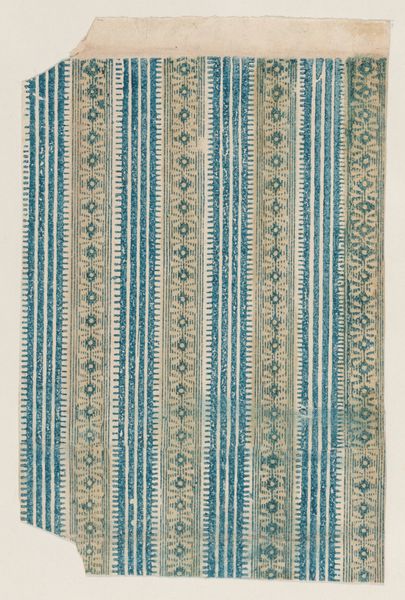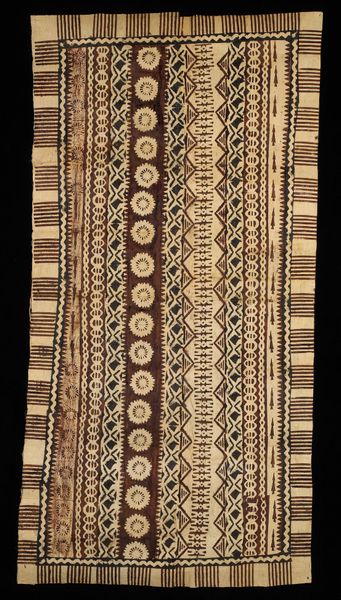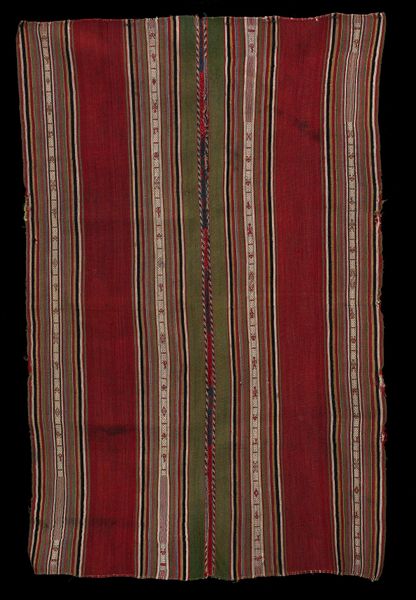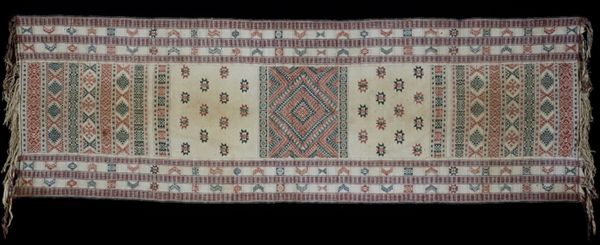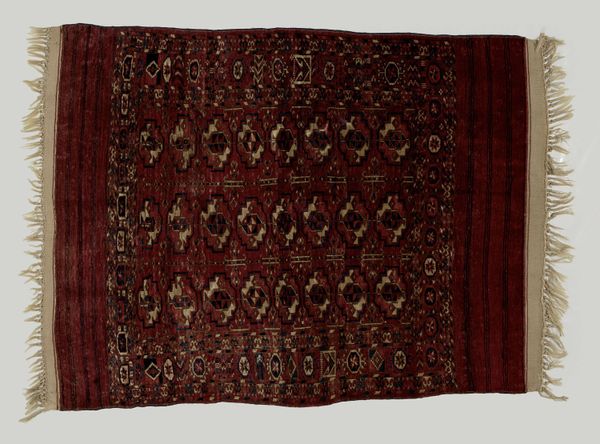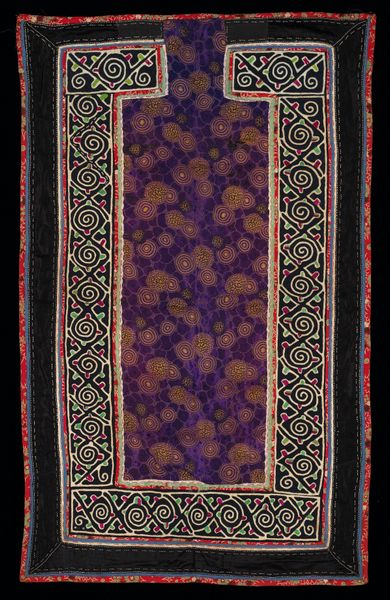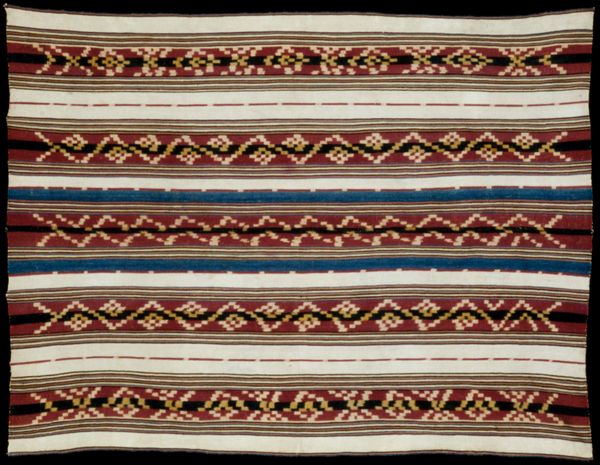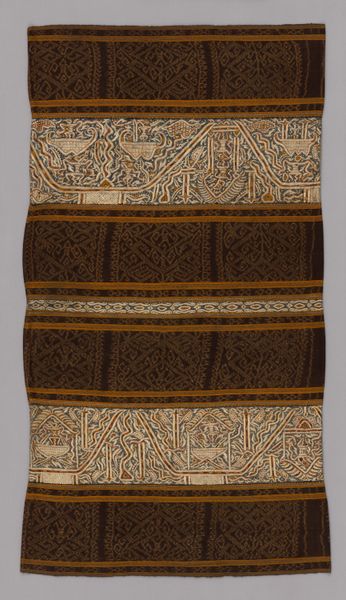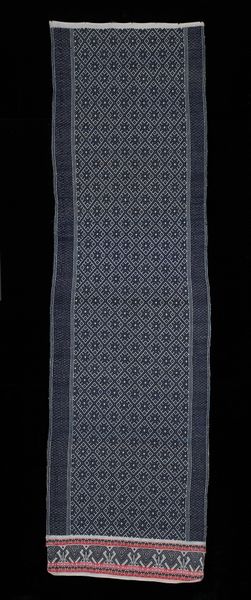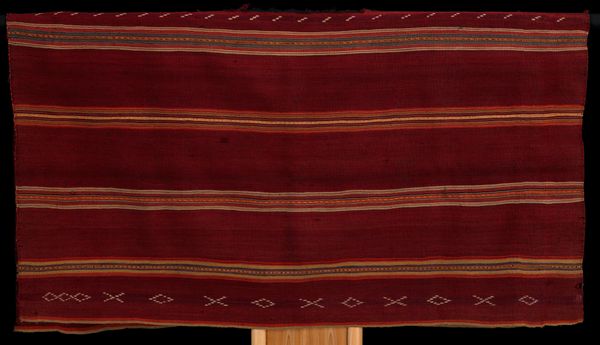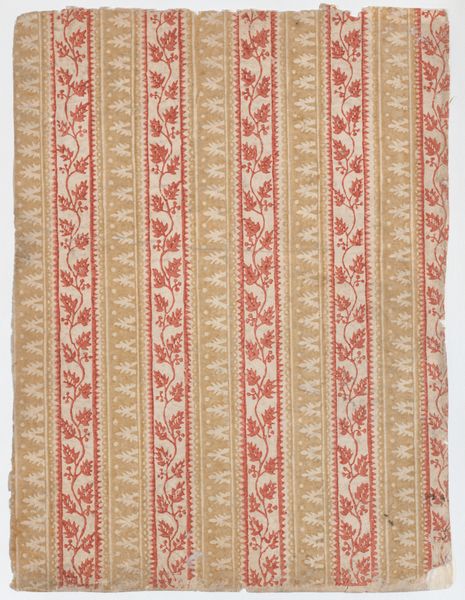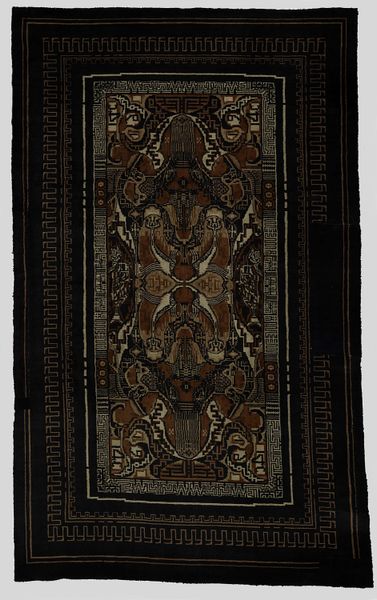
textile, cotton
#
pattern heavy
#
natural stone pattern
#
textile
#
geometric pattern
#
repetitive shape and pattern
#
repetition of pattern
#
regular pattern
#
pattern repetition
#
cotton
#
textile design
#
layered pattern
#
combined pattern
Dimensions: 64 x 39 1/8 in. (162.56 x 99.38 cm) (without fringe)
Copyright: Public Domain
Curator: Standing before us is a rather striking Selimut, or man's textile, dating from around the 20th century. Editor: My first impression is warmth. The sandy yellows paired with the indigo feel grounded and natural. And look at that heavy fringe, I wonder what it felt like against the skin? Curator: Yes, its tactile quality is compelling. What truly draws me in is the dense symbolic patterning woven into the center panel. The motifs feel like a language, possibly evoking status or origin through repeated iconic forms. Editor: I'm struck by the production effort; imagine the meticulous hours spent at the loom to achieve this regularity. Was it a commissioned piece, or a form of trade? The level of craft speaks to the importance placed on textile work in its society. You know, I also wonder where the raw cotton came from and whether the natural dyes like indigo were locally sourced or traded for. Curator: The repetitive nature of the motifs likely provided more than mere visual decoration. In many cultures, repeated symbols help imprint their meaning onto the subconscious. The act of wearing this textile would, therefore, be an almost constant affirmation of particular values. Editor: I’m wondering, though, about the gendered division of labor. We know it's designated as a man’s textile— were the spinners, dyers, and weavers also exclusively male, and how did that social organization affect the final product? It really encourages one to look into those systems of textile creation as social practices and the networks it establishes. Curator: An important observation. Seeing it through a modern lens, one might think about the cultural memory embedded within its very threads. The symbols almost act as coded messages for future generations. Editor: Precisely! And to return to the sheer physicality: considering the weaving techniques, the quality of cotton... such practical knowledge, and resourcefulness, passed down generations to create both art and utility. The act of creating the textile and also, you know, of cleaning it... Curator: Thinking about that level of commitment to craft truly elevates our understanding, doesn’t it? Editor: Indeed, beyond aesthetics, it’s a beautiful testament to skill, culture, and material interaction.
Comments
No comments
Be the first to comment and join the conversation on the ultimate creative platform.
